The real Kyoto lies in the backstreets. What is the popular hotel "Hotel Regasta Kyoto Higashiyama Sanjo" where you can enjoy stories?

There are two words to describe the regions of Kyoto: "Rakuchu" and "Rakugai." For people who were born and raised in Kyoto, Kyoto = "Rakuchu" refers to the limited area of central Kyoto, and any other area outside of the capital is considered to be outside of the capital (Rakugai). But did you know that there are deep spots in the "Rakugai" that you can't experience in the glamorous capital? In this article, we will introduce how to enjoy Kyoto at Hotel Regasta Kyoto Higashiyama Sanjo, where y...
-
Table of Contents
- An inn where you can experience Kyoto not found in guidebooks
- The journey begins with a fortune slip
- Discover the "true face of Kyoto" by strolling through the backstreets
- The crossroads between "this world" and "the other world"
- A secret story kept secret in the backstreets
- A blissful sleep bath soothed by gentle sounds
- Discover your own Kyoto through the backstreets
An inn where you can experience Kyoto not found in guidebooks

When you think of the Kamo River in Kyoto, many people will probably imagine the Sanjo Ohashi Bridge. This convenient and busy area was once likened to the Sanzu River , a place that marked the boundary between this world and the next .
The Kamo River, across which the Sanjo Ohashi Bridge crosses, is the dividing line between Kyoto and Kyoto City. This is also the final stop on the Tokaido Highway, which connects Edo to Kyoto , and is a place lined with post towns.
Our story about the backstreets of Kyoto begins at Hotel Regasta Kyoto Higashiyama Sanjo , located on the border between Kyoto city and its outskirts, at the end of our journey.

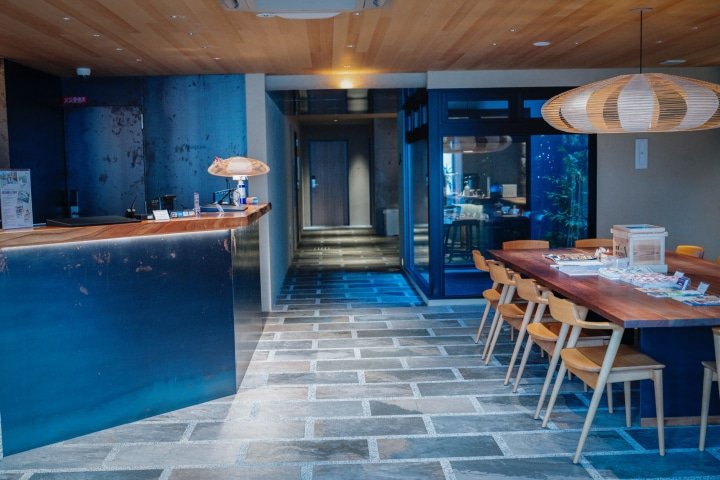
The "Hatogō" themed Hotel Regusta Kyoto Higashiyama Sanjo has an interior that blends tradition and modernity, creating a space that is just like a modern-day Hatago . The style that allows you to fully enjoy tradition is also popular with foreign travelers, and currently more than half of the guests are foreign travelers.
The journey begins with a fortune slip
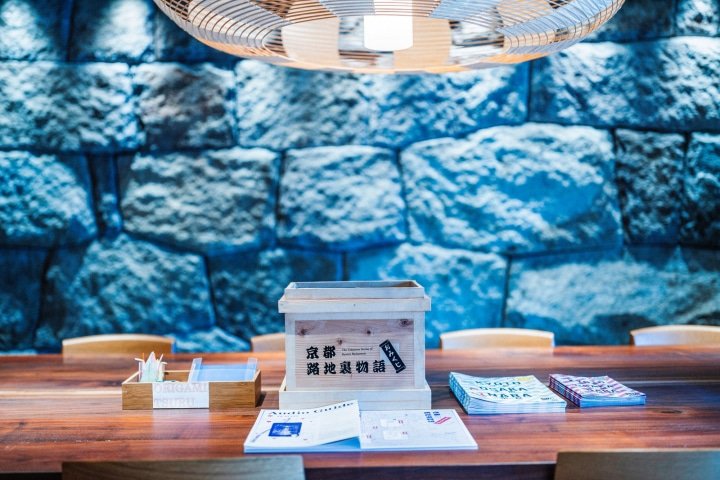
Once we finished checking in, we were given a box of fortune slips .
When you draw a fortune slip, the location of the audio guide you will visit is written on it. Depending on the fortune slip you draw, you can win original goods such as hand towels and incense . Even if you don't win any goods, you can start your own story by starting the audio guide tour from the spot you drew.
Now, with this omikuji as your talisman, let's head to Kiyomizuzaka, the starting point of our journey .
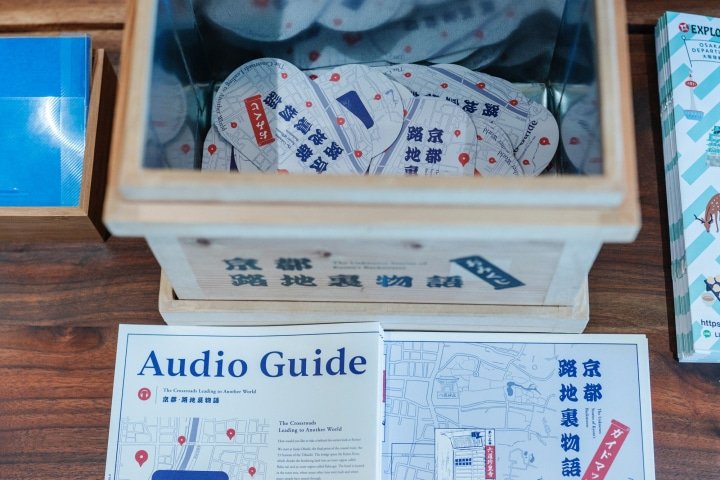
How to get to Hotel Regasta Kyoto Higashiyama Sanjo from JR Kyoto Station
By subway (approx. 15 minutes)
Take the Karasuma Line from Kyoto Station to Karasuma Oike Station and transfer to the Tozai Line. From Higashiyama Station, it's a 1-minute walk to the hotel.
By bus (approx. 30 minutes)
[City bus 206]
Take the bus from Kyoto Station bus rotary, platform D2 at "Kyoto Station", go to 12 stations (about 25 minutes), get off at "Higashiyama-Sanjo", then walk for 2 minutes to the hotel
[City Bus 5 or Gojodori 5]
Take the bus from Kyoto Station bus rotary, A1 platform, and after 11 stops (about 28 minutes), get off at Higashiyama-Sanjo, then walk for 2 minutes to the hotel.
How to get to Kiyomizuzaka from Hotel Regasta Kyoto Higashiyama Sanjo
Walking time: about 25 minutes
By bus (approx. 20 minutes)
[City bus 206]
From the hotel, it is a 2-minute walk to Higashiyama Sanjo, 4 stations away (approximately 15 minutes), and you will arrive immediately after getting off at Kiyomizu-michi.
Discover the "true face of Kyoto" by strolling through the backstreets
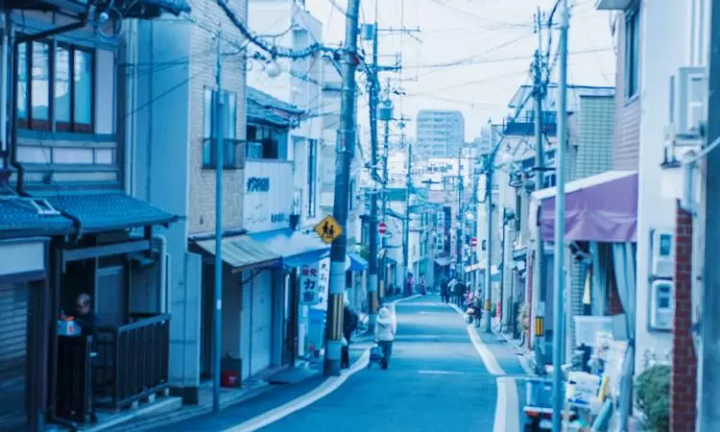
This audio guide starts at the foot of Kiyomizuzaka Hill , where the streets suddenly disappear, with tourists bustling up the hill on their way to Kiyomizu-dera Temple. What lies at the end of this quiet, winding road, now completely devoid of tourists? What story lies in this place, far removed from tourist destinations? Let's take a look at the contents of the audio guide right away.
――――――――――――――――――――――――――――――
Chapter 01|Kiyomizu-dera Temple
(Omitted)
I would like you to walk up this slope to the Kamo River. Along the way, you will see various alleys and entertainment districts, a sight that is different from the city. Then, about 30 minutes later, when you have crossed the Kamo River on your own two feet , you will understand why the alleys and entertainment districts have been preserved in this place.
(Omitted)
This area was called "Rakugai" and was a plain that spread outside Kyoto . Beyond that was a vast "funeral ground (corpse storage place)" and was whispered to be "the crossroads between this world and the next" . And it was inhabited by people called "Saka no Mono" who could not live in the capital for various reasons.
The people of the hills. They were people who had no choice but to live on the slopes, not on the flat ground. They were the home of outsiders , including those who received money from visitors to Kiyomizu-dera Temple.
――――――――――――――――――――――――――――――

This place is where the "Saka no Mono" (people on the slopes), outsiders from Kyoto who could not live in Kyoto, gathered. How surprised would the people of the capital at that time be to see that this place, which is difficult for ordinary people to approach, has now become a tourist destination attracting people from all over the world ?
The gentle road, which at first seemed ordinary, suddenly changes as if you were surrounded by a completely different atmosphere before and after listening to the guide.
"Why have alleyways and entertainment districts remained in this place?" Let's take a walk through the back alleys to find out the reason.
The crossroads between "this world" and "the other world"

As we walked straight ahead, we came across a temple with an impressive red gate and a stone with the words "Rokudo-no-Tsuji" written on it. What is this temple, quietly standing in an alley? Let's go inside with the help of our guide.
――――――――――――――――――――――――――――――
Chapter 03 | Rokudochinnoji Temple
This well connects this world with the afterlife . It is said that a man named Ono no Takamura traveled to the underworld through this well.
Ono no Takamura worked as a government official during the day, but at night he would pass through this well to commute to the afterlife. The reason for this was that he worked as a secretary to Enma-sama , the king of the underworld who acts as a judge and decides which of the six realms the dead will go to. If you look into the Enma- Takamura Hall on the temple grounds, you will see statues of Enma-sama and Ono no Takamura standing side by side.
――――――――――――――――――――――――――――――
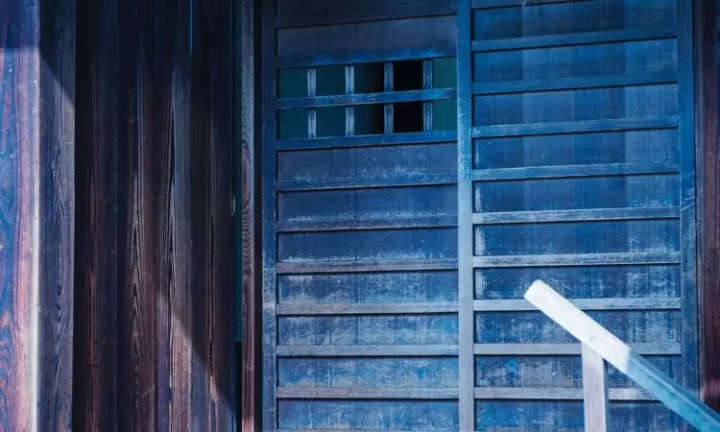
This is a place where legends remain that seem like something out of a comic book, where Ono no Takamura would sneak out of the capital and work as King Enma's secretary every night . After that, he passed away and went to the other side, but is he still helping King Enma?
Rokudo Chinno-ji Temple still holds festivals to welcome the spirits of ancestors during the Obon period in August, as it is the entrance to the underworld .
A secret story kept secret in the backstreets

The narrow, winding roads continue gently. As we follow the guide, we come across many interesting alley names. Each one has a story, and when I think about how they continue gently to this day, I feel like even a randomly placed bucket can have a story .
Here we will introduce one of the many guides, a back alley story.
――――――――――――――――――――――――――――――
Chapter 06 | Yakushi Alley
Tracing back the history of this alley, it was known as "Yakushi Tsujiko" in ancient times, and is said to have been inhabited by " Uta-Bikuni ." Uta-Bikuni were nuns who would explain scenes from hell and other scenes while singing songs . However, in addition to their work as nuns, Uta-Bikuni also had another job behind the scenes : that of a prostitute .
It seems they could no longer make a living by just explaining pictures. As the entertainment industry became more and more popular, the services they offered became excessive, and the Uta-Bikuni began to double as prostitutes. This place, where the sacred and the secular mingle, attracted many pilgrims and wanderers from the countryside, so it may have been an ideal place for them to spread their faith and make a living through sex.
It can also be said that, just as these women, who could never be said to be of high social status, found a place to belong in Yakushi Tsujiko, the alleys of the past served as a safety net for people who were not permitted to live on the main streets .
――――――――――――――――――――――――――――――

The winding, chaotic alleys are the perfect place to hide from the public eye.
Perhaps the alleys have evolved to protect their lives. Standing before me in an alley brimming with life, I felt the generosity of the people who embraced the "hill people" who had no place in the city of Kyoto.
Other stories that have been quietly watched over by the back alleys up until now will unfold in the play, including stories about the spirit world that have been passed down like fairy tales , and stories about the changes that have taken place in the back alleys up to the present day.
It's amazing to learn that there are so many stories to be found in the narrow alleys , and one of the attractions of audio guides is that they allow you to notice small details that you wouldn't normally notice .
The back alleys of Kyoto make you feel as if you have wandered into a spirit world.
Experience the fascinating sight of a different view every time you turn down an alley, and experience the small piece of history that still lives on today.
A blissful sleep bath soothed by gentle sounds

After enjoying the back alleys of Kyoto, a unique sleeping experience awaits you at Hotel Regasta Kyoto Higashiyama Sanjo.
The miraculous frequency "528 Hz" is said to improve the quality of sleep . By bathing your whole body in this sound as you fall asleep, you can experience a blissful sleep.
Another thoughtful touch to guests tired from traveling is that all you have to do is open the dedicated page using the QR code provided in the room and play the video through your smartphone speaker .
This was my first experience with 528 Hz. I thought it would be the kind of relaxation music I'm familiar with, but when I actually played the music , the resonant sound spread out, which was a completely new experience for me. It was the first time I'd ever felt my mind slowly calm down .
Once you've adjusted the volume to your liking, all you have to do is drift off to sleep.
I was a little skeptical about whether music alone would make a difference, but I was surprised at how quickly I fell asleep . I woke up refreshed the next morning, and my legs didn't feel tired the day before.
I had no idea that the power of music could change the quality of my sleep so much ...it was the beginning of a new world.
Now that the scorching heat continues and people tend to have shallow sleep, this is a sleeping experience that we would like everyone to try.
Discover your own Kyoto through the backstreets
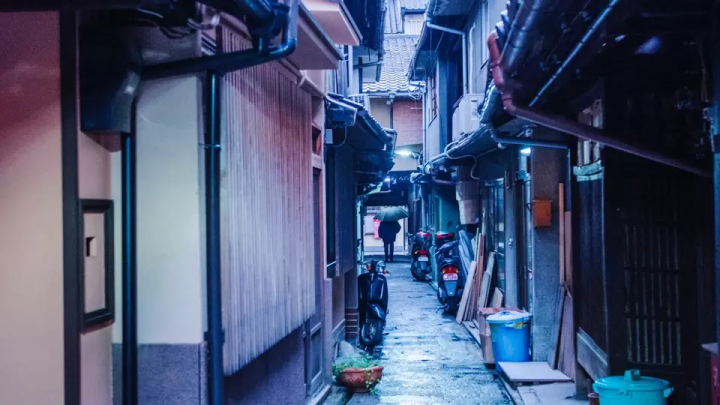
Take a journey through the back alleys of the area while listening to the audio guide, immersing yourself in its history.
By the time you can answer the question posed at the beginning of the guidebook - "Why have alleyways and entertainment districts been preserved in this location?" - you will have seen a new side of Kyoto that you have never known before .
Once you discover the true face of Kyoto that isn't found in guidebooks, your true Kyoto trip may begin .
If you're interested in experiencing a unique Kyoto trip, try Hotel Regasta Kyoto Higashisanjo's audio guide for a new way to travel .
Please note : The alleys introduced here are still residential areas, so if you do visit, please be considerate of your surroundings when walking.
Interview cooperation: Hotel Regusta Kyoto Higashiyama Sanjo
ON THE TRIP is an audio guide app that lets you enjoy cultural assets such as temples, shrines, and art museums, as well as the stories that live in each city, all while touring spots mapped out on a map. Each guide is a moving work of art, like a movie or novel, and listening to it will deepen your understanding of your destination and enhance your travel experience. We'll introduce you to the charms of Japan that you won't find in guidebooks, revealed through the audio guide app, and a new way of traveling that can only be experienced with an audio guide.
The contents on this page may partially contain automatic translation.


























![[2026] Top 5 Strawberry Picking Spots in Tokushima, Naruto| Farms and Access Guide for January to May](https://resources.matcha-jp.com/resize/720x2000/2025/03/06-227165.webp)



